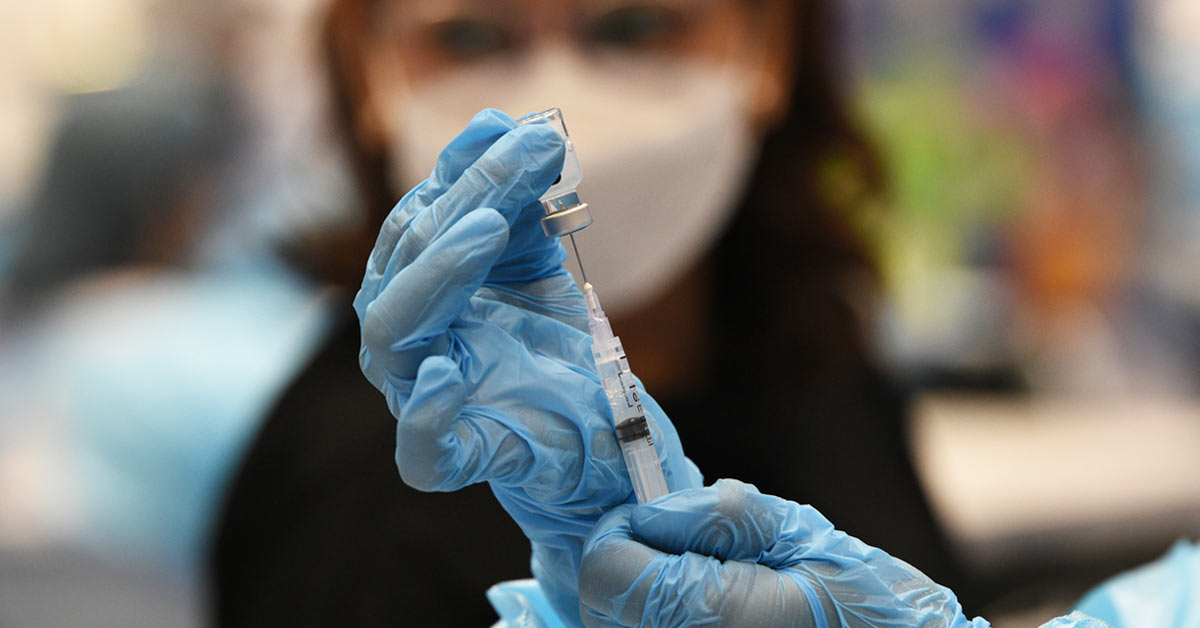Vaccination could reduce the risk of long COVID, research by the Office for National Statistics (ONS) in the United Kingdom (UK) suggests.
The study, of more than 6,000 adults, found those who were double-vaccinated had a 41 percent lower likelihood of self-reporting COVID symptoms 12 weeks after first testing positive.
Overall, 9.5 percent of the double-vaccinated group reported experiencing long COVID, defined as symptoms lasting more than four weeks, compared with 14.6 percent of a socio-demographically matched group who were unvaccinated.
Dr David Strain, a clinical senior lecturer at the University of Exeter medical school and the British Medical Association’s lead on long COVID, said the ONS findings fitted with research published this week that showed low levels of certain antibodies were more common in those who developed long COVID than in patients who swiftly recovered.
“We know that the vaccines trigger these immune responses,” he said. “If you approach a COVID infection with higher levels of these immunoglobulins, it’s less likely to [become long COVID].” Strain added that it was reassuring that vaccination appeared to mitigate the risk of long COVID.
A limitation of the study was that, because of the timing of the vaccination programme, the double-vaccinated participants were sampled at a later time point – 238 days on average – than those in the unvaccinated group. So, changes in dominant COVID variants in circulation and other factors that varied over the course of the pandemic could have influenced the results.
The study was also observational and, while the two groups were matched for age and other socio-economic factors, there may have been other differences between the groups, meaning the study could not conclusively prove that vaccination caused the different rates of illness.
Separately, the ONS found that differences in death rates between people from different ethnic backgrounds have persisted since the start of the vaccination programme, with the rate of death involving COVID highest for the Bangladeshi group (five times greater than the white British group for males, and 4.5 greater for females), followed by the Pakistani group (3.1 for males, 2.6 for females) and black Africans (2.4 for males, 1.7 for females).
In most cases, the different rates were explained by where people lived, social disadvantage, occupation, overall health and vaccination status. However, the Bangladeshi group and Pakistani men remained at higher risk than average even after adjusting for these factors. Previous research highlighted a gene, more common in south Asian populations, that could place this group at higher risk from COVID.
Ethnic Minorities
Vahé Nafilyan, of the ONS, said: “Today’s analysis shows that since the vaccination programme began, the risk of COVID-19 death has continued to be higher in most ethnic minority groups than in the white British group. For the first time, we show that the lower vaccination coverage in some ethnic groups also contributes to the elevated risk of COVID-19 death, particularly in the black African and black Caribbean groups.”
The latest data from the ONS, based on swabs collected from randomly selected households, suggests that COVID infection levels fell in England, Wales and Scotland last week, although the trend was unclear in Northern Ireland.
The estimates suggest about 2,629,400 people, or about one in 20, in England had COVID in the week ending 22 January.
The study also shows that while infection levels are falling in most age groups, they are rising in school-age children. Similar findings have been reported in other research, including the React-1 study, the latest results of which were released on Wednesday by Imperial College London.
According to ONS figures for the week ending 22 January, the percentage of those testing positive for COVID increased in England among children between the age of two and school year 6, as well as for those in school year 7-11, with almost 12 percent of the former and more than six percent of the latter testing positive.
While some scientists have called for renewed efforts to vaccinate adolescents and expand the programme to all children aged five and above, others have emphasised that COVID is generally a mild infection for the age group and that there is a tight risk-benefit involved.
